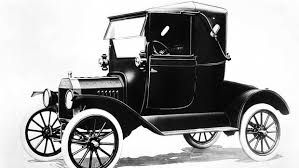Before the industrial revolution we traveled by foot, cart, carriage, and stage coach. The few paved roads were made of stone or bricks and were in the cities. Beasts of burden like the horse drew our wagons and carts. Tiny communities dotted the countryside located just far enough from each other that a horse-drawn wagon could travel from and back to local farms within one day.
The steam engine changed all this. Trains “whistle-stopped” between towns lucky enough to be located along the tracks. Sailing ships were quickly replaced by steamboats. Manufacturing exploded everywhere steamboats could reach. Rails connected towns and cities and trains transported new products as quickly as they evolved.
And then the reciprocating gasoline and diesel engines evolved. Henry Ford’s “tin lizzie”

put America on the road. Dirt roads were paved. People could drive to and from work. Communities enlarged and homes could be farther from work. Shopping was accomplished with cars and at greater distances. Suburbs evolved. All of this was enabled by coal and oil fed steam engines, and oil fired trucks and cars.
Coal gas for home heating, lighting, and cooking was replaced by coal-fired electricity generation in the late 1800’s in cities. The developed world became ever more dependent upon coal and oil as personal wealth and consumption skyrocketed.
You and I grew up in this world of fossil fueled wealth and consumption. How could we possibly imagine living in a pre-industrial world again? Could such a thing happen? Technology has brought us to the present-day world. Could it fail to keep unlimited growth going because we run out of fossil fuels and massively change the ecology of the world ahead?